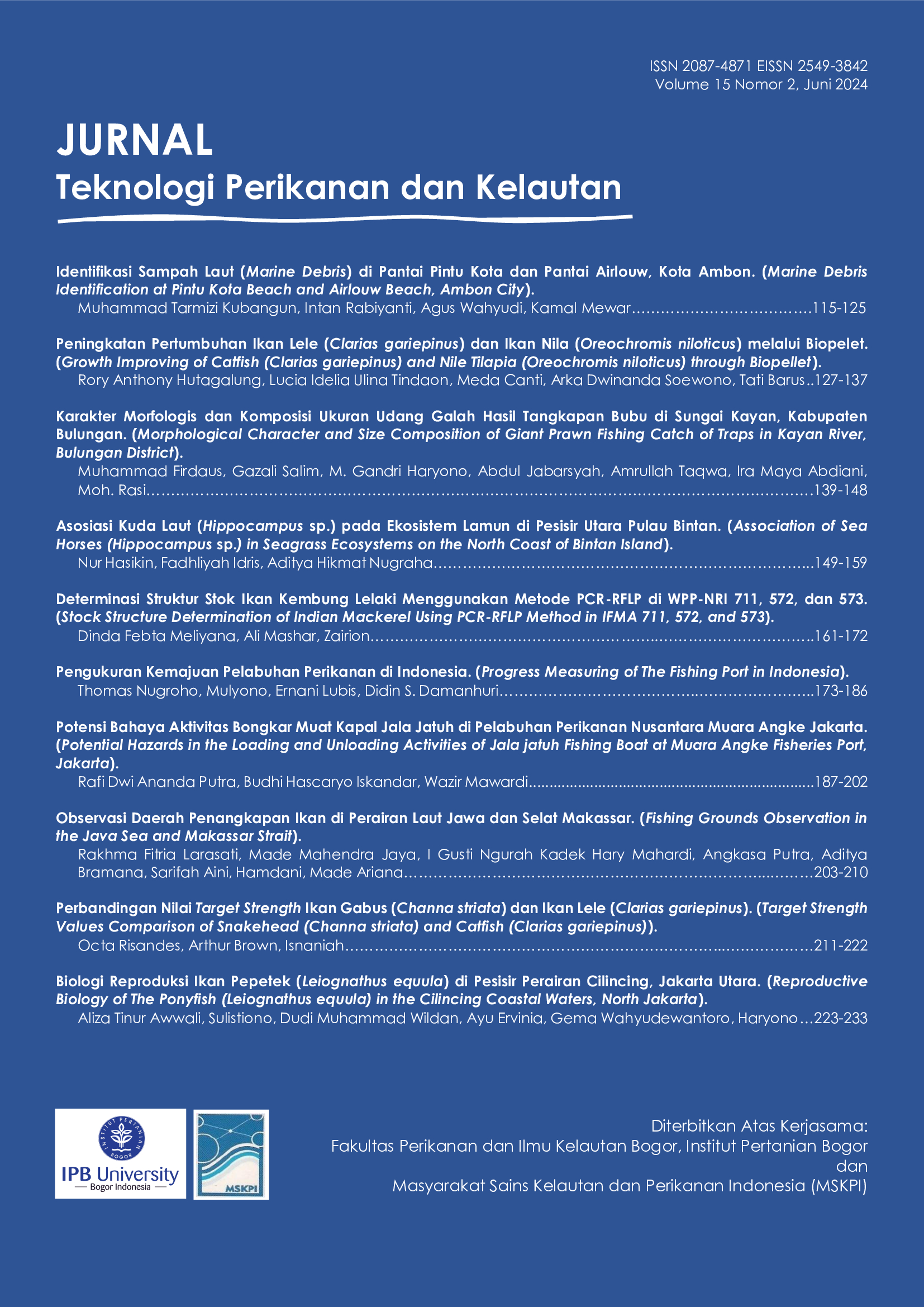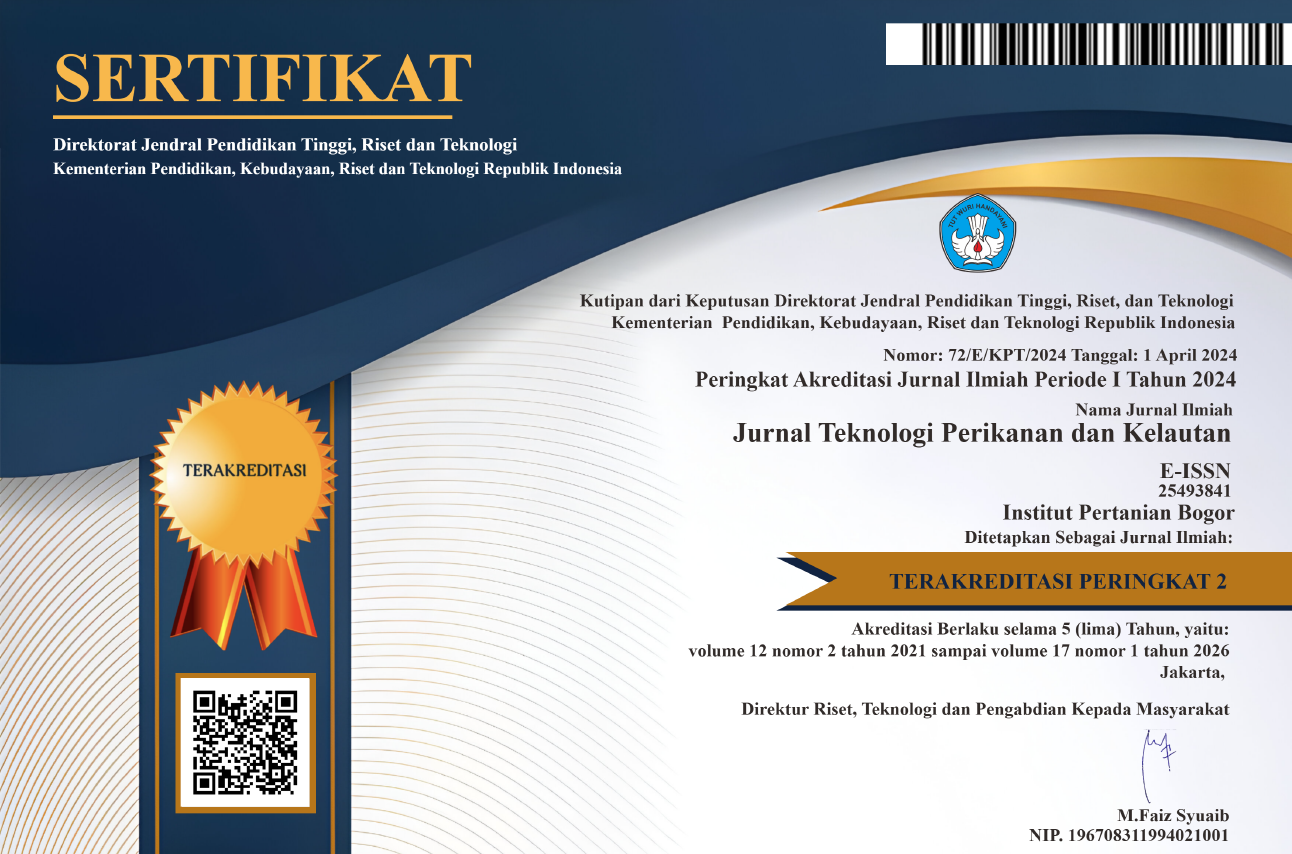PENGUKURAN KEMAJUAN PELABUHAN PERIKANAN DI INDONESIA
Abstract
The existence of fishing ports are expected to support the national logistics system of fish, starting from production, storage, and distribution so that it can control prices and meet the raw material needs of the domestic fish processing and consumption industry. However, in its development, the existence of fishing ports in Indonesia has not become an attraction as a landing place for caught fish due to limited market access, so the production of fish landed and sold at fishing ports is lower than outside fishing ports. The research method applied was quantitative using production indices and fish production value, production concentration, export share and shift-share analysis, and productivity index. The aim of the research is to measure the progress of fishing ports at a macro level. The research results obtained show that the amount of production and production value of fish landed fluctuates. This shows the uncertainty a number of fish production landed at fishing ports in Indonesia. The production increase index and average production value per species of fish were 49.26 and 96.52 percent, respectively. The production volume of fish landed was concentrated in type C and D fishing ports. The export market share for fresh chilled fish commodities were dominated by markets in neighboring countries, namely Malaysia, Singapore, Japan, and China. In terms of technical efficiency and costs, the value obtained was less than one. The research conclusion is that fishing ports in Indonesia have not developed stagnantly and tend to experience setbacks.
Copyright (c) 2024 Jurnal Teknologi Perikanan dan Kelautan

This work is licensed under a Creative Commons Attribution-NonCommercial 4.0 International License.





















